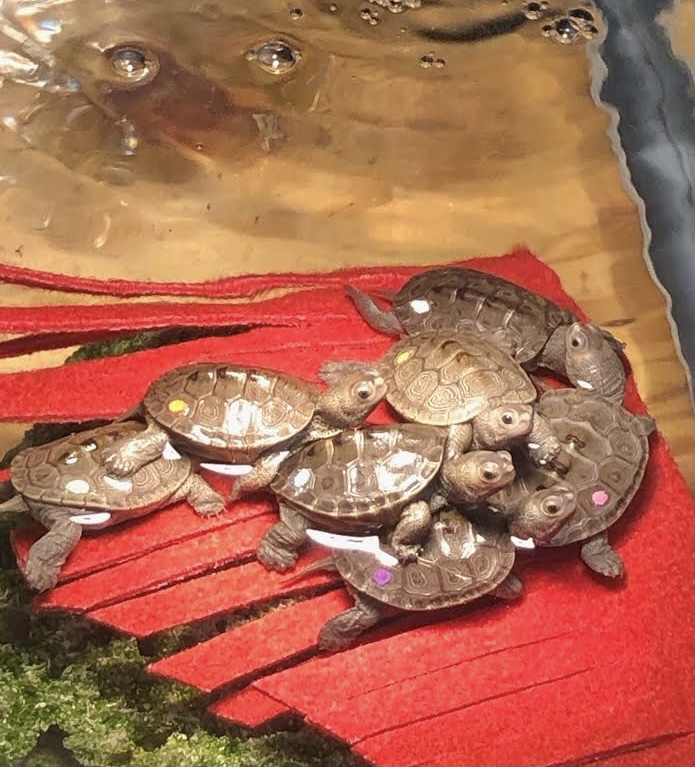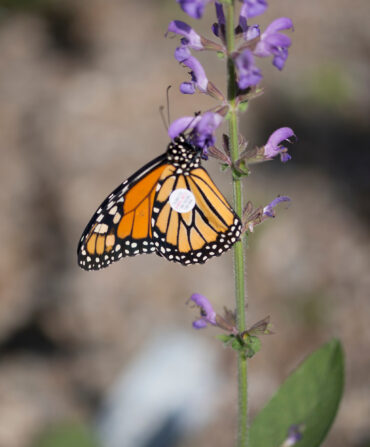Last summer, a battered female diamondback terrapin arrived at the South Carolina Aquarium in Charleston. She had been hit by a car near Cape Romain, and despite the aquarium’s best efforts to save the turtle, she died of her injuries—but not before the aquarium’s veterinarians noted she was carrying seven eggs. Now, more than a year later, following weeks of incubation and subsequent months of careful raising, those seven baby terrapins will have a chance to make it in the wild.
“People call diamondback terrapins the jewels of the marsh,” says Kristin Cecala, a herpetologist at Sewanee: The University of the South who has been part of long-term studies on terrapins running since 1983 at South Carolina’s Kiawah Island. The turtles can range from creamy white to nearly black, with orange or green patterns. They live in the brackish water of salt marshes, tidal rivers, and bays—the only such estuarine turtles in the country—and were once extremely common from the Texas coast all the way up the eastern coastline to Massachusetts. But their populations have taken big hits. They were still harvested for human consumption up until the early 2000s, until most states finally passed protective legislation. Now, their main threats come from habitat loss, crab traps, and, thanks to increasing coastal development, car strikes.
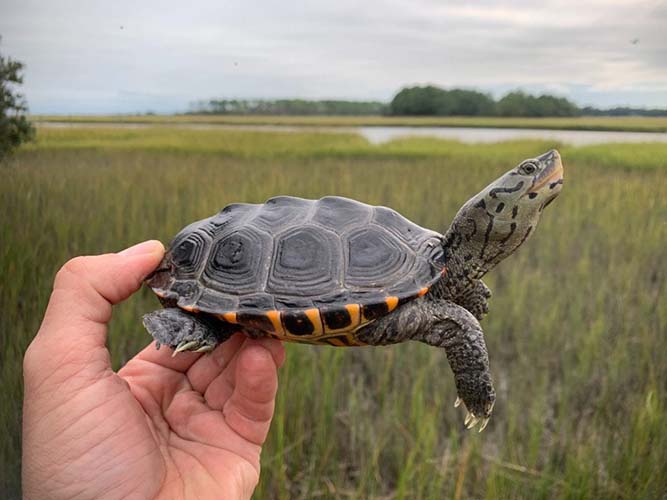
The group of biologists at Kiawah have documented steep drops in the population over time; surveys of a creek that would turn up sixty terrapins in the ’80s now reliably turn up a single turtle (the same turtle, year after year—they call her Lonely Lucy). Female turtles are particularly at risk because they come up to nest above the high tide line in the marsh. “When you see causeways to and on barrier islands, they are built on the salt marsh itself,” Cecala explains. “That puts most any road in potential terrapin nesting area.”
So when the South Carolina Aquarium received the injured female, it wasn’t entirely a surprise; the aquarium receives multiple such terrapins each year and always makes the effort to try and save them. “In this case, we saw that she had eggs, and we gave incubation a try,” says Whitney Daniels, the veterinarian assistant at the aquarium who oversaw the baby terrapins’ day-to-day care. Sometimes, the eggs don’t make it, but in this case, all seven hatched successfully.
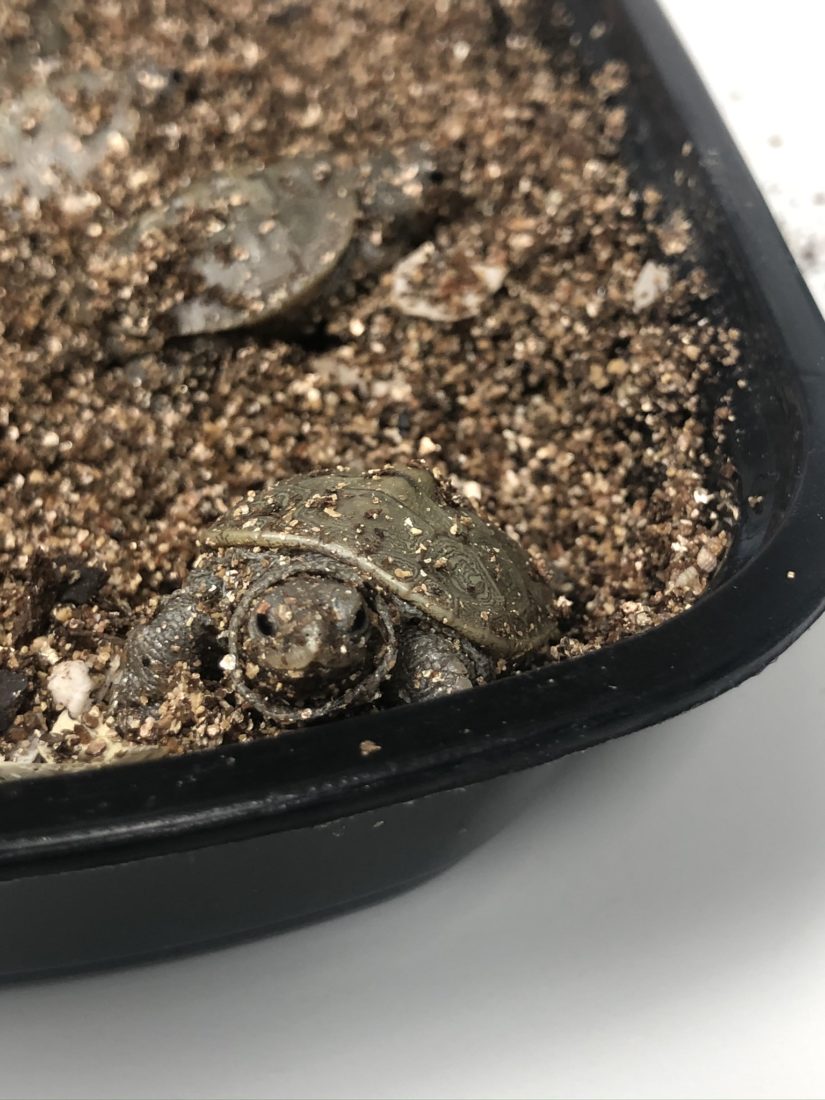
After the babies emerged on day thirty-five of incubation, Daniels and the team at the aquarium began what they call “headstarting”—raising the tiny turtles past the most vulnerable stage of their lives. “We weighed and measured them weekly, and then biweekly,” Daniels says. “And we offered a variety of seasonal food and altered the salinity of their water to what they would experience in a salt marsh.”
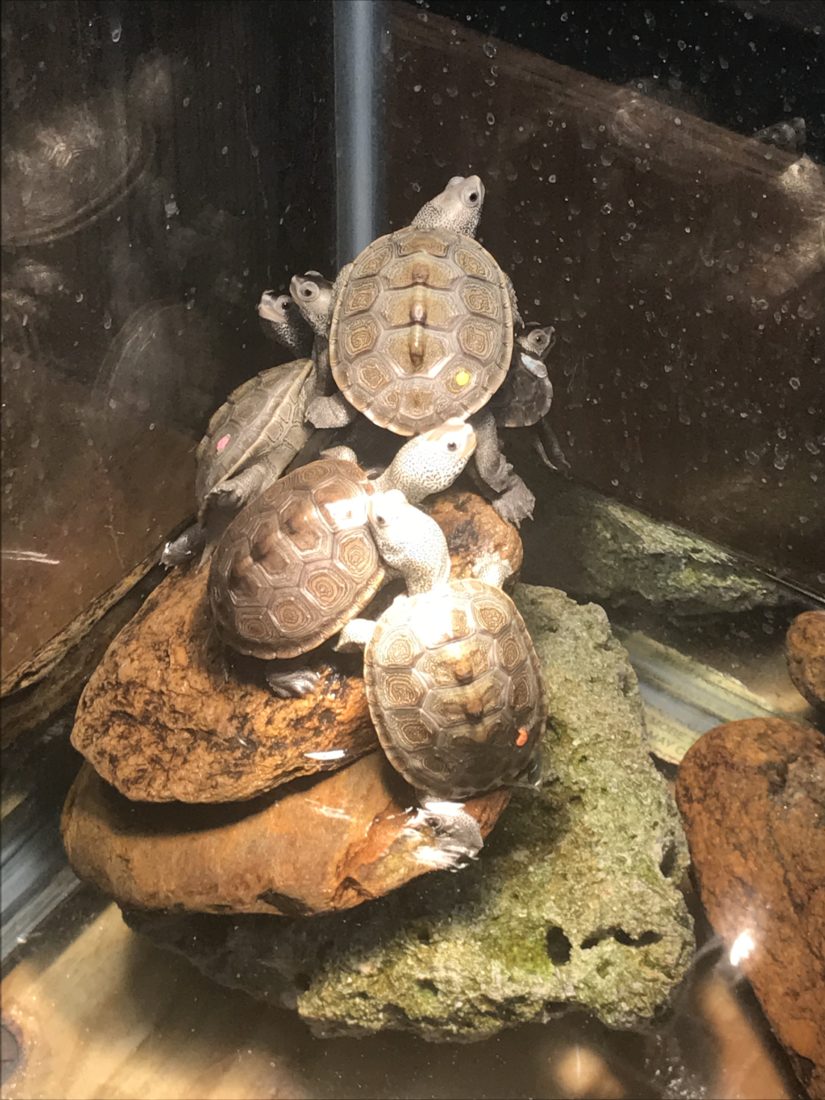
Of course, Daniels got a little attached. “They’ve been like my little babies,” she says. Staff nicknamed them after the seven dwarves, though they didn’t always quite live up to their names. Bashful, for instance, was anything but. “Each one has his or her own little personality, and we love them, but our goal is always release,” Daniels says. “We want to make sure they can survive on their own so we can get them back in the wild where they can contribute to their population.”
When the big day came a few weeks ago, the aquarium staff transported the siblings to the Cape Romain National Wildlife Refuge and released them one by one, as near as possible to where their mother was recovered. And the broader scale conservation work continues: The Kiawah Island biologists are working with the aquarium on how to make crab traps safer for terrapins, and some barrier islands have begun putting up flashing terrapin crossing signs during nesting season from May to July.

As Cecala points out, the best thing for the turtles is not to lose adult females to car strikes in the first place. But when it does happen, raising and releasing the young back into the population can help reduce the impact of that loss. “All we can do is give them a shot,” Daniels says. “Now, these seven terrapins are back out there where they belong, carrying on their mom’s legacy.”
See a video of the release below.


